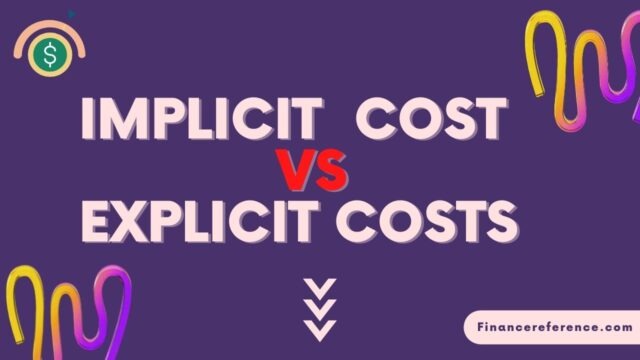
When it comes to business decisions or personal financial planning, costs are an integral part of determining the best course of action. However, not all costs are immediately visible or quantifiable. Some costs are implicit, while some are explicit. Understanding these differences can help you make better decisions and avoid unnecessary financial losses.
In this blog post, we will explore the significance of implicit vs explicit costs, their differences, and how they impact your financial decisions.
Explicit Costs
Explicit costs are costs that are easy to identify, quantify, and measure. They are the actual expenses incurred in the course of doing business or personal financial activities. These expenses can include rent, wages, taxes, utility bills, and the cost of raw materials. When making a decision, you can easily calculate and plan for these costs as they are typically part of your budget or pricing strategy. Examples of explicit costs include paying your employees’ salaries or paying for office supplies.
Implicit Costs
In contrast, implicit costs are hidden costs that are not explicitly stated or quantified. These are the opportunity costs or the value of the resources that could have been used elsewhere. Implicit costs are often overlooked, as they do not involve direct cash outflows, but they can have significant effects on your finances in the long run. Some examples of implicit costs include the value of your time spent on an activity rather than on something else, the cost of investing in your education, or the value of the foregone profits in choosing one project over another.
Significance of implicit vs explicit costs:
Implicit costs are subjective and difficult to measure, whereas explicit costs are objective and easier to calculate. Due to their “hidden” nature, implicit costs are often ignored or undervalued. However, understanding implicit costs’ significance is essential in making sound financial decisions. They can reveal if a venture or activity is not yielding enough returns, if a particular investment is worth the cost, or if a project is worth pursuing long-term. Failing to consider implicit costs can lead to missed opportunities, poor decision-making, and financial losses.
Real-World Examples
To illustrate the difference between implicit vs explicit costs, let’s take the example of a business owner who is considering expanding his business. The explicit costs of expansion would include buying a new building, hiring employees, and purchasing new equipment.
However, additional implicit costs should be considered, such as the foregone income from the owner’s job as he devotes more time to the business, and the loss of clients due to unfamiliarity with the new building that might force the business owner to spend more on marketing. Considering these implicit costs will help the owner decide if the potential revenues from expanded operations will be worth it, given that he will have to leave his current job and invest more of his energy into the business.
Conclusion
Explicit and implicit costs are both crucial components of making sound financial decisions. Focusing solely on explicit costs could lead to missed opportunities, poor decision-making, and financial-related losses. Meanwhile, ignoring implicit costs could also lead to missed opportunities and long-term financial losses while choosing the wrong strategy or making poor investment choices. By understanding the difference between them, you can make better financial decisions and prioritize your resources effectively.


































